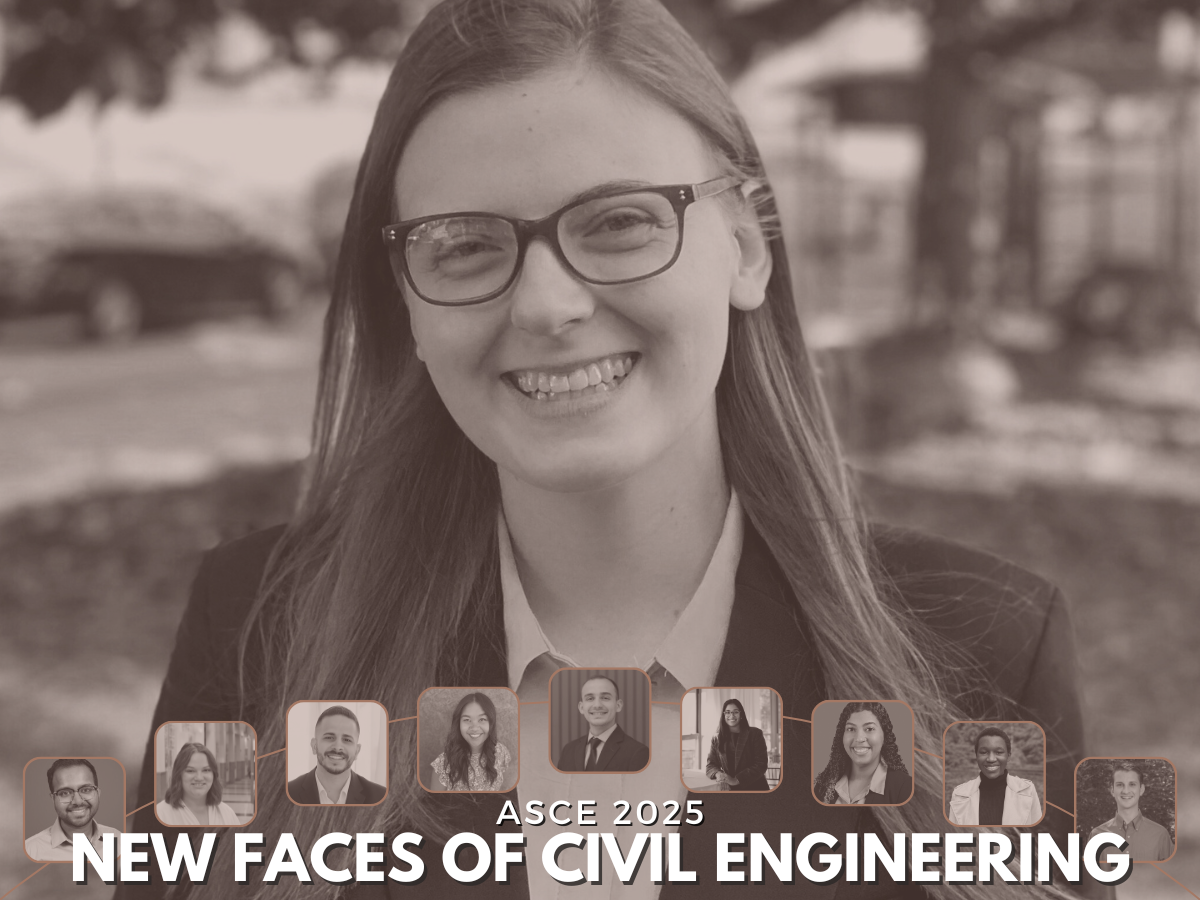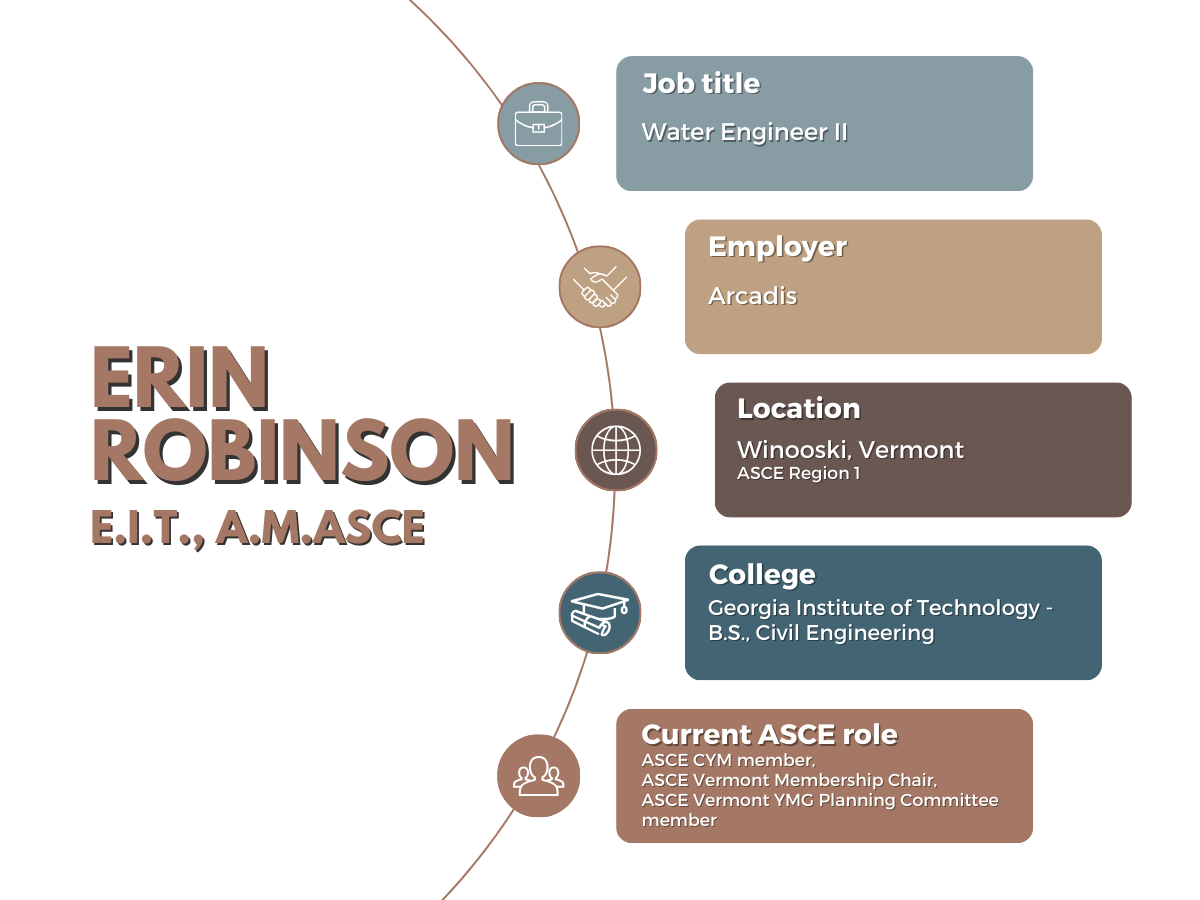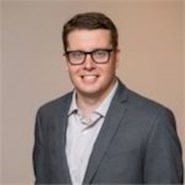

Every career must start somewhere, and perhaps this is the moment when Erin Robinson’s civil engineering journey began.
::
It’s a sunny summer day in central Florida. The air is heavy and humid. A young girl dangles her feet over the edge of a wooden dock on a calm, still, crystal clear river. Time moves slowly. The girl registers every creature, every movement, every sound. This is her education. The start of a keen awareness of nature.
::
“My mom would always take my siblings and me to local and state parks,” Robinson said. “We would do hikes and observe how the trees and animals would interact with each other. I loved piecing together a story based on their behaviors.”
It was important to her parents to raise inquisitive and empathetic kids, so these outings were simple ways to activate their children’s imaginations and give them experiences that would serve them well into their futures.
And it worked.
Robinson is a water engineer for Arcadis, based in Burlington, Vermont. She’s still channeling that younger version of herself, observing the ever-changing dynamics of her surroundings. It’s just her job now.
“Looking back, all those activities inspired me to always be cognizant of the places I’m in, to be aware of the environment and to know its history,” Robinson said. “Approaching engineering projects, you need to understand how the problem actually started and who it’s affecting. That’s why connecting with your clients and the community is a critical component to developing better, longer-lasting solutions.”
Robinson’s solutions-oriented mindset and awareness began as a kid in a state park, continued through a childhood of community service, and, ultimately, earned her the opportunity to bring those lessons full circle as a freshman at Georgia Tech – a school whose motto, fittingly enough, is “progress and service.”
While busy adjusting to student life at one of the nation’s elite engineering programs, she worked three jobs, organized several service events across Atlanta, and expanded her understanding of the world through a study-abroad program.
“I worked really hard in school,” Robinson said. “Some classes were very uh … humbling … experiences, but they always challenged me to learn, adapt, and grow.”
ASCE has honored Robinson as a 2025 New Face of Civil Engineering. She talked recently with Civil Engineering Source about her career.
Civil Engineering Source: What is the accomplishment or aspect of your career you are most proud of?
Erin Robinson: Oooh good question! I guess my biggest accomplishment is just becoming an engineer.
I didn’t really have that big STEM mentor when I was a kid where it’s like, “Oh my gosh, that person’s engineer; I want to be that.” It was more like I kind of stumbled into the field.
When I was asked everyone’s favorite question: “What do you want to be when you grow up?” I wasn’t sure where I was going. I thought, “I know that I like nature. I know that I like working with the community. I know that I like STEM-related things. I’m really good at math and science.”
So, I Googled all those things, and what came up was “civil engineer.” I started researching and thought this does sound like something I’d like to do.
It’s critical thinking. It’s problem-solving. It’s representing the people in a technical world. And I really liked that.
A hop, skip, and a million follow-up Google searches later, I landed in the world of water.
I started Arcadis as an intern in the process and mechanical side of water and wastewater treatment plants. And then every year I was like, “OK, I want to make sure that I’m still growing and still learning.” So, I would make sure that I was working on at least one project slightly outside of my field … or “water-adjacent” project. This opened my perception of the industry up tenfold. Water was literally everywhere.
I’ve recently moved from Atlanta to Burlington, Vermont. I’m a fully remote employee, doing less of the fieldwork that I really love but still doing a lot of the important, really interesting design work for stormwater-related projects while also now branching into resiliency planning.
The Northeast is doing some incredible work with climate adaptation and I am hoping to get a taste of it soon.
Source: Before your move to Vermont, you were involved in some big projects in Georgia, especially at a young age. Can you talk about what those experiences were like?
Robinson: One that stands out is definitely DeKalb County’s sewer capacity assessment program. I love working with their modeling team.
The county is blossoming with the potential of commercial and residential development. Any time a new expansion opportunity arises, a sewer capacity request is filed. Depending on the basin it’s associated with, I add it to the model, and run downstream evaluations to determine if existing infrastructure has capacity.
I have worked on this project since I was an intern and rose in the ranks over the years. I am now the main modeler for the Arcadis-assigned basins. It’s really interesting to watch a fascinating city grow and improve, and I like being able to contribute to that.
Another project I am very proud of started as a volunteer project with the Arcadis Local Sparks program. They were looking for social and community impact movements to help fund and a small group of us jumped at the opportunity.
Some of my really good friends at Georgia Tech also work at Arcadis in the Atlanta Office, and we got together and connected with an organization [the Chattahoochee Riverkeepers] that uses a GIS model to identify areas in the Chattahoochee River basin that would be optimal locations for adding trash collection devices: trash traps.
The very basic ones almost look like a sideways shopping cart with pool noodles for bank anchors. The traps actually added to waterways are more substantial and pack a punch with reducing trash pollution by sitting on the surface of slower-moving streams and rivers to collect litter.
The CRK wanted to beef up and build out the model so it’s more effective and could even be scaled up nationally. For instance, if there’s a riverkeeper in North Carolina that wants to use this model, they can just open it, change the basin, and then, boom, they can see the best locations for their trash trap.
For the past almost-two years, we have developed a nationally applicable GIS model that ranks HUC12 [12-digit hydrologic unit code] watersheds based on the impact a trash trap installation would have both in terms of quantity of trash removed and the level of environmental justice achieved.
The second part of the model prioritizes flowlines based how easy installing a trash trap would be at that flowline. We created a 115-page step-by-step manual on how to run the model based on your watershed, and we just conducted our second training with riverkeepers from all across the state of North Carolina.
The fruits of our labor have been sweet, I’ll say that. One team member will even be taking our project to the 2025 EWRI Congress in Alaska.
Source: You clearly have a lot of passion for this work. Where do you think that comes from?
Robinson: I’m just grateful for the opportunities that I’ve had, because I feel like it took so much effort and work – not only from myself, but from my family and mentors supporting me as well. It took a village to get me here.
So it doesn’t even cross my mind to not want to work hard and help others.
Source: What impact do you hope to have on the profession?
Robinson: I just want to make sure that I am contributing in a positive way.
Well, contributing in a positive way and inspiring others to do so too.
I absolutely do not have all the answers. But I know that being open and willing to talk about things can help somebody else. It helped me when I was starting out! Starting dialogue and creating spaces for others to openly discuss the industry will only fill gaps.
I am very active in different mentoring programs. I hope through the conversations that I have and relationships I build, I can inspire those around me to give back and become mentors.
When I was a student, I was assigned mentees in our ASCE Student Chapter. I was only two years older than them and dumbfounded at how a sleep-deprived over-committer could possibly be any inspiration to them, but my willingness to honestly share my experiences was seen as refreshing and valuable.
They initially wanted technical or professional advice to develop into “competent engineers,” but as our bond grew, I became a trusted resource they could use to help navigate the unspoken issues of the industry: moving to new places, college life, discrimination, etc. They now, with love, call me “Grammy” and know I’m only a phone call away as they start their full-time engineering jobs. And this Grammy is so proud of them.
Yes, I really enjoy engineering. Yes, I really enjoy the projects that I work on and feel so proud of the products that I design. But I don’t think I really want to be “famous” for those things. I just want to make sure that I have positively contributed to the industry so that it will always be improving and better for the next person.



